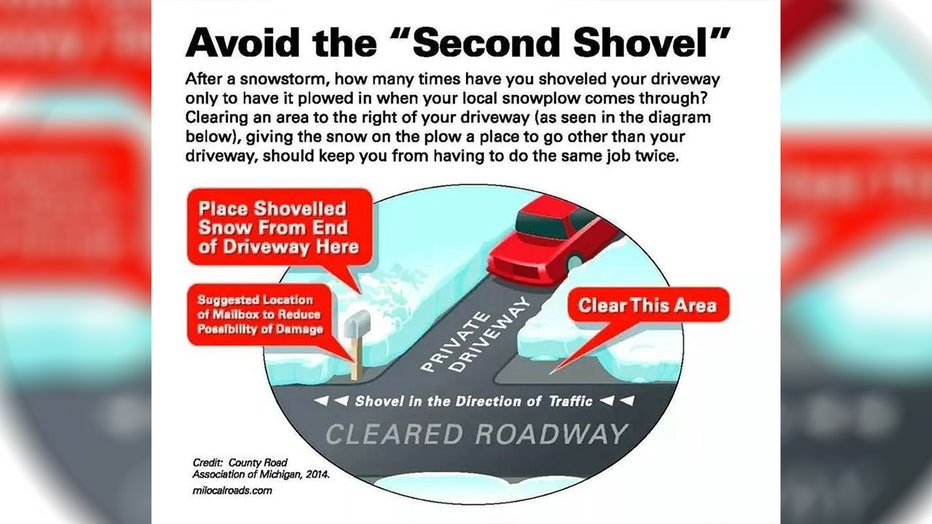Shoveling tips: How to clear your driveway so you don't get icy wall from snow plow
FILE PHOTO: Joe Rutolo snow plows his driveway after a heavy snowfall. Photo by Natalie Kolb 1/24/2015 (Photo By Natalie Kolb/MediaNews Group/Reading Eagle via Getty Images)
(FOX 9) - Warroad Municipal Utilities is coming in clutch with tips so you don't end up with a wall of chunky, icy snow at the end of your driveway when the snowplow passes – inevitably right after you head inside from shoveling.
RELATED: Minnesotans enjoy first major snow of the season
In a Facebook post on Tuesday, the City of Warroad's utilities department – which is well-versed in snow removal – shared tips to avoid the "second shovel" with a handy graphic detailing what to do:

Warroad Municipal Utilities on Tuesday, November 16, posted a graphic with tips on how to avoid a "second shovel." (Warroad Municipal Utilities, Facebook)
Doing a little extra clearing when you're shoveling could help you avoid having to shovel or snow blow the end of your driveway again after the local plow goes through, the Facebook post explains.
It's as simple as clearing an area that's about 10 feet long and at least a car width wide to the right of your driveway (shovel in the direction of traffic/the direction your local plow goes), Warroad Municipal Utilities explains. This way, when the plow goes down the street, it'll push most of the snow into the area you've already cleared out instead of getting pushed into your driveway.
Warroad Municipal Utilities has additional tips for making clearing snow easier during the winter months. Among them:
- Don’t put off clearing the snow pile if temperatures are dropping and the wind is blowing the snow into drifts. But if it's getting warmer and you have no place to go, you can wait until conditions improve to go out and shovel. "Keep in mind, however, that melting, water-logged snow can be heavy," the post says.
- "Start with your shovel. If you have a snow blower, you shouldn’t have a problem blowing away soft, fluffy snow. But once it’s crusty and frozen, you’ll need to change tactics," the post explains. "Use a shovel to break the mound into smaller chunks that you can either toss aside or that will fit into the snow blower’s intake more readily. This is especially important if you have an undersized snow blower such as a single-stage gas or battery-powered machine that doesn’t have the power to crush crusty snow on its own."
- "Less is more. Even if you have a beefier snow blower, take care that it doesn’t become clogged by chunking up the job," the post adds. "Take smaller passes at about half the width of the intake. It may take more time, but you’ll have fewer interruptions stopping to unclog the machine and it will throw the snow you do attack faster and farther."
Throughout the winter – and any time of year – download the FOX 9 Weather app for your local forecast and the latest weather alerts in your area.

